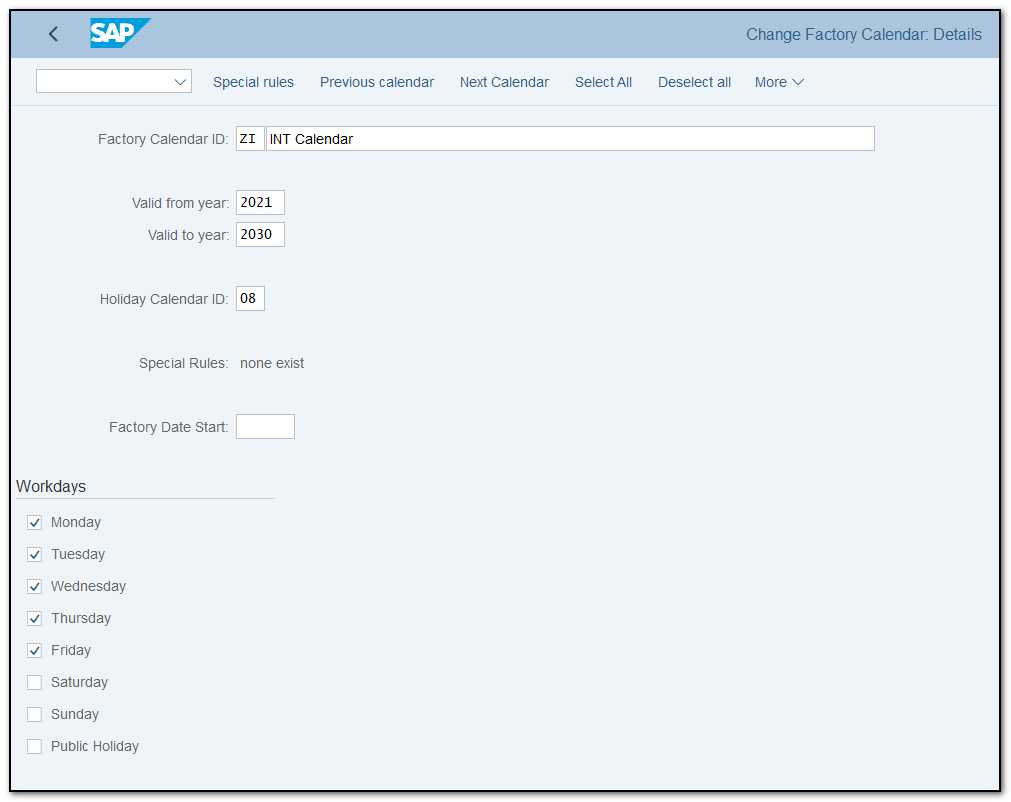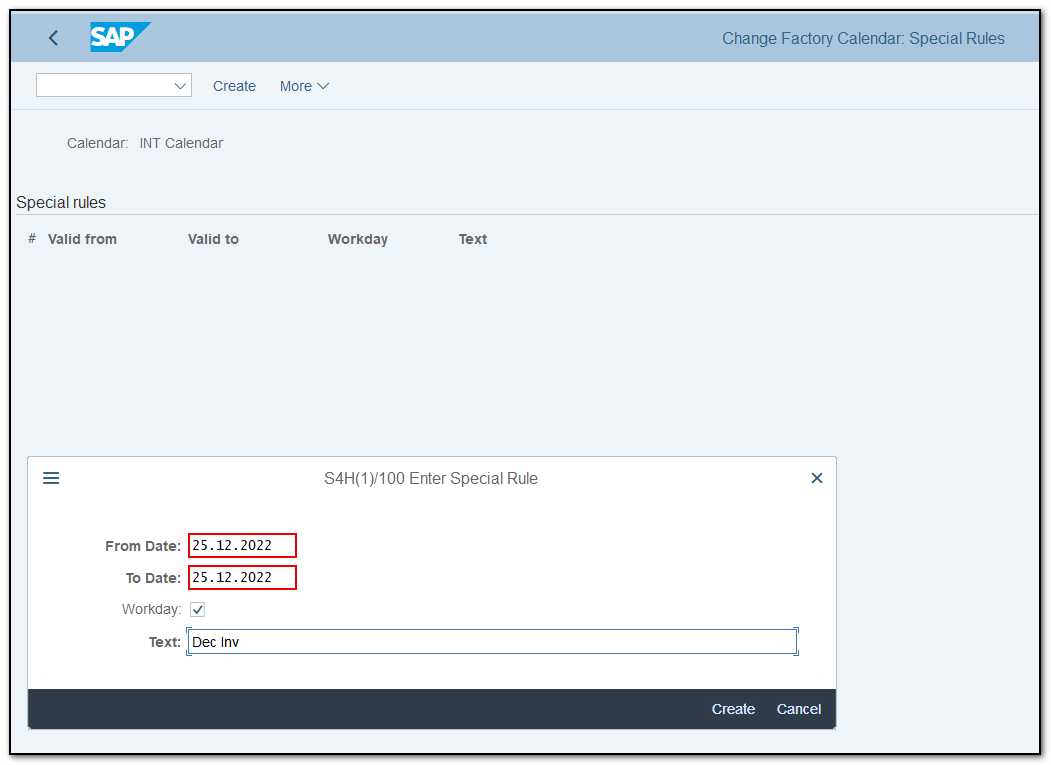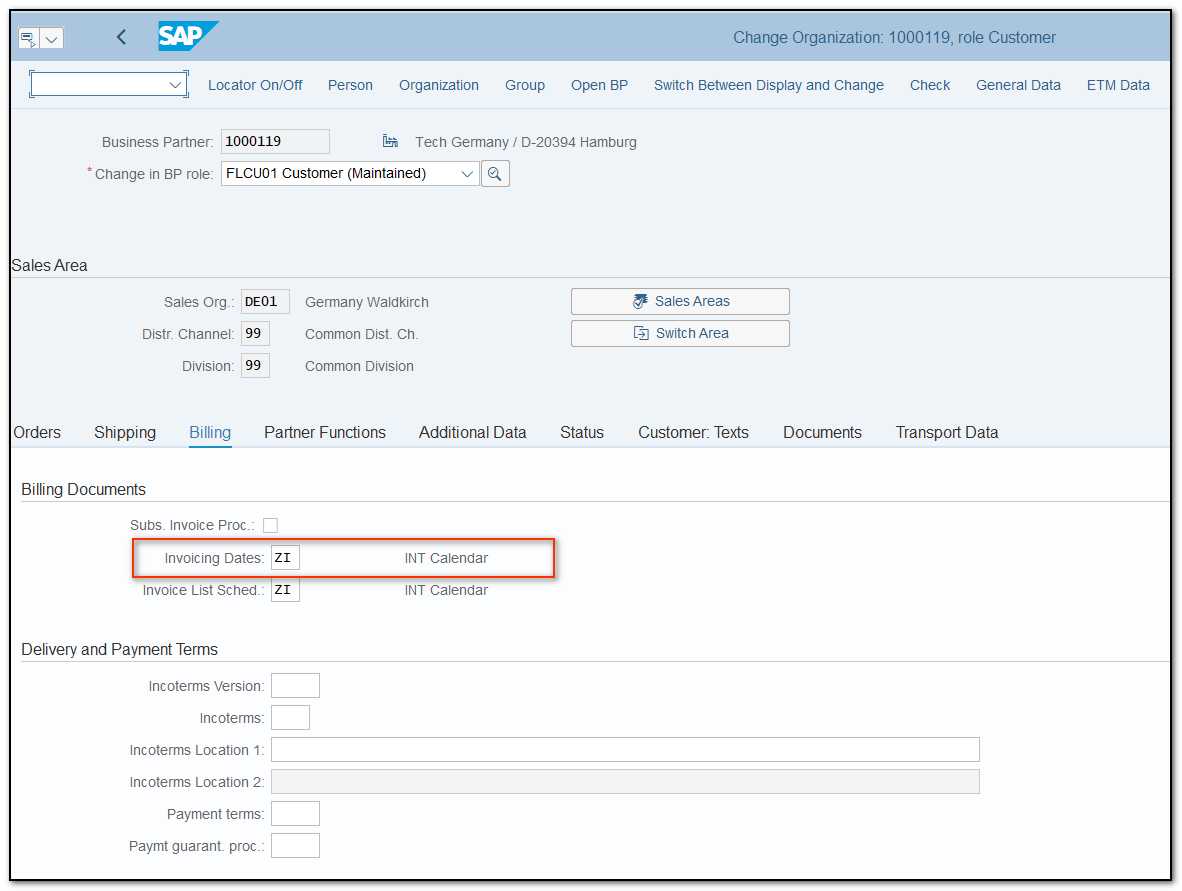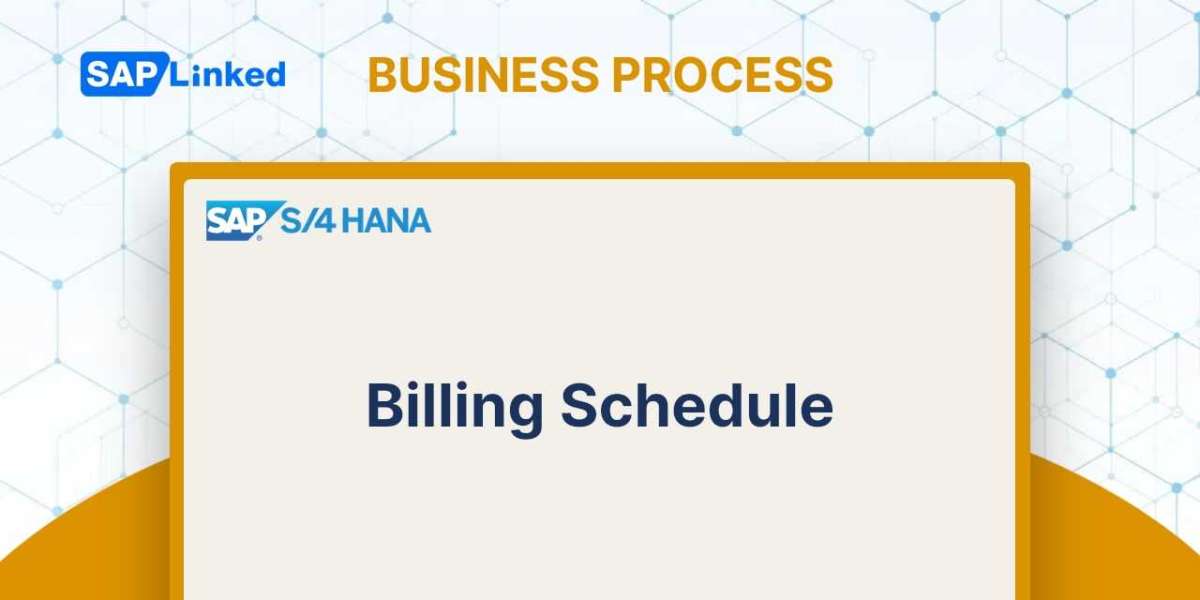The sales order's Billing Date field determines when an item becomes due for billing. By creating a billing schedule, you may manage the billing transaction for a customer and have it happen only on specific dates.
A billing schedule can be accessed using the same procedure and is comparable to a factory calendar. However, you can specify a schedule (calendar) with the dates (workdays) that are acceptable for invoicing. The calendar is thereafter added to the client master record.
Use the path to define a billing schedule:
SAP Menu ➢ Logistics ➢ Sales And Distribution ➢ Master Data ➢ Others ➢ Billing Schedule (SCAL)
Assign a two-digit identification code and a description to the factory calendar (see Figure 1). Each of these fields is self-explanatory.

Figure 1 Defining a billing schedule
Select the Special Rules option if you wish to build up a billing schedule on specific dates in the month.
Create a new rule and enter the required date in the From Date and To Date columns. For instance, both the "from" date and the "to" date are November 30 in Figure 2. Mark it as a workday and give it a memorable name before saving. Create rules in a similar manner and save them in the calendar for all the additional days you wish to schedule billing.

Figure 2 Defining special rules in the billing schedule.
It is necessary to designate the billing schedule calendar in the customer master in the sales data under the Billing Documents tab. Refer to the Figure 3. A custom billing calendar can be attached using the field Invoicing Dates on the same screen.

Figure 3 Billing Schedule Calendar in the Customer Master
The system copies the following working day from the calendar into the Billing Date column when a sales document is prepared. Therefore, once the billing date arrives, the document is due for payment.



